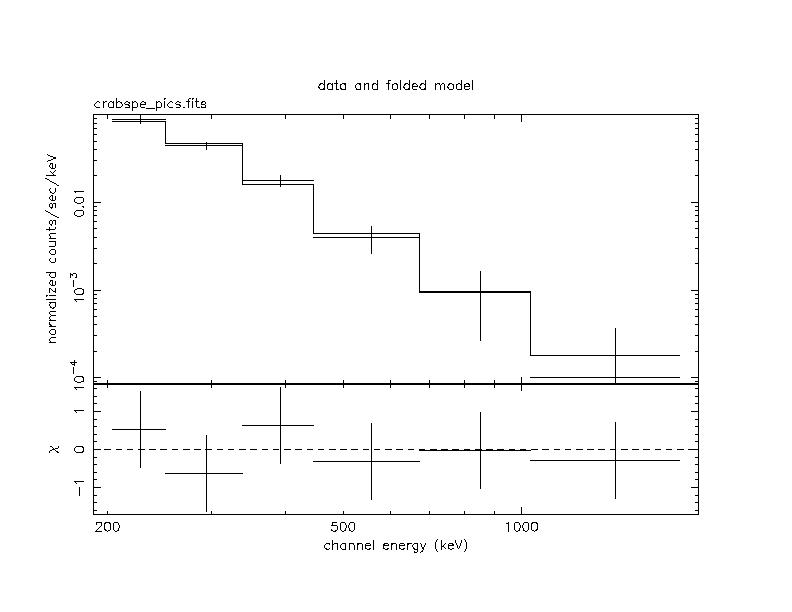 |
It is also possible produce the source spectrum from the mosaic image.
At http://www.isdc.unige.ch/integral/osa/scripts, you find an example of such a of perl script spextract_pics.pl. To use it create a list of files you want to use for spectral extraction. In the case of staring, file picsit.lst will contain a single line:
picsit_ima.fits
Now you are ready to extract the spectrum. To do this you can either fill the values manually from the picsit_sky_res file, or extract the fluxes from the brightest pixel around the catalog position with the help of the spextract_pics.pl:
cd $REP_BASE_PROD/obs/picsit_ima perl spextract_pics.pl -i picsit.lst -r 83.605 -d 21.95\ -n 8 -o crabspe_pics.fits -m ../../ic/ibis/rsp/pics_srmf_grp_0005.fits\ -a ../../ic/ibis/rsp/pics_sarf_rsp_0003.fits(In this command, switches -i and -o define the input and output files, -r and -d define the RA and DEC of the desired pixel, -n defines the number of energy ranges, -m and -a define the locations of rmf and arf matrices).
The result is shown in Figure 27.